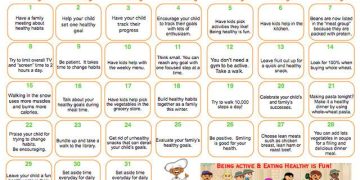In the vibrant culinary painting of life, food allergies are those unexpected colors that, without warning, can disrupt the harmony. Picture sitting at a lavish dinner party, surrounded by an intoxicating blend of flavors and aromas. Just as you reach out to sample the tempting fare, you pause; the joy of the gastronomic adventure suddenly overshadowed by the need to navigate a sensitive food allergy. This scenario might seem daunting to most, but fear not! This article is designed to be your map, your compass, your star-marked guide in the tricky landscape of food allergies. Entitled “Navigating Food Allergies: A Practical Guide to Safe and Healthy Eating”, we aim to arm you with knowledge and strategies not only to steer clear of allergenic landmines but also to relish the diverse world of food with safety and confidence. As you embark on this exciting journey, we promise you a path that will lead to a more enlightened and enjoyable dining experience. So, tighten your seat belts and get ready for an epic journey of culinary exploration! Identifying and Understanding Common Food Allergies
Food allergies can be challenging to navigate, but the key is understanding your particular sensitivities. The most common food allergies include milk, eggs, peanuts, tree nuts, wheat, soy, fish, and shellfish. Symptoms can range from mild (like hives) to severe (like anaphylaxis). Knowing your symptoms and the foods that trigger them forms the basis for efficient management of food allergies.
Navigating the Grocery Aisles: Safe Shopping Strategies for Food Allergies
Grocery shopping when you have food allergies can feel like navigating a minefield. However, simple strategies can make it easier. First, always plan your shopping list around allergy-friendly foods. Second, stick to the outer perimeter of the grocery store, where fresh foods like fruits, vegetables, meats, and fish are typically located. These foods are less likely to include hidden allergens.
Demystifying Food Labels: Recognizing Hidden Allergens in Packaged Foods
With food labeling laws in most developed countries, it has become easier to identify potential allergens in packaged foods. However, terms like “natural flavors” or “spices” can sometimes hide allergens. Keep an eye out for these tricky terms. Also, note that “dairy-free” does not necessarily mean “lactose-free,” and “gluten-free” does not mean “wheat-free.”
Reinventing Your Favorite Recipes: Swap Outs and Substitutes for Common Allergens
Don’t let food allergies make you miss out on your favorite dishes. Many alternatives can mimic the tastes and textures of common allergens. For example, almond milk is a great dairy-free substitute, black bean spaghetti is an excellent wheat-free pasta alternative, and sunflower seed butter can replace peanut butter.
Managing Social Gatherings and Dining Out: How to Maintain Your Dietary Restrictions
Navigating social gatherings and restaurants with food allergies can be tough, but communication is essential. Don’t hesitate to inform the host or restaurant about your allergies. Also, you can offer to bring your own food to social gatherings.
Developing an Action Plan: What to Do When Accidental Exposure Happens
Despite your best precautions, accidental exposure could occur. Having an action plan can help you manage such situations effectively. This plan should include first aid methods, contacting healthcare providers, and the use of epinephrine auto-injectors, if prescribed.
Wellness and Nutrition: Maintaining a Healthy Diet Despite Your Food Restrictions
Maintaining a balanced, healthy diet despite food restrictions may seem challenging. However, several allergy-friendly alternatives can provide necessary nutrients. Include a variety of fruits, vegetables, lean proteins, and healthy fats to ensure a balanced and nutritious diet.
Education Is Emancipation: Empower Yourself and Others Through Allergy Awareness
Education is key to managing food allergies. This includes not only educating yourself about your allergies but also teaching those around you. Share your experiences, teach others about the challenges of food allergies, and spread awareness about how to support individuals with food allergies. This can help create a more understanding and accommodating environment for everyone. In life’s grand banquet, food often offers comforting ripples of pleasure amidst the waves of everyday routine. But for those threading the labyrinth of food allergies, this banquet can morph into a minefield. Don’t let these allergenic coils dampen your gastronomic spirits. Instead, arm yourself with knowledge, kindle a spirit of adventure and venture forth. Remember, food allergies are unruly hedges on your path, not impenetrable barriers. With practical information, consciousness, and a sprinkling of patience, you can still unlock a hearty feast for your senses. Now that we’ve walked together along the corridors of safe and healthy eating, it’s time for you to explore, experience and relish your unique culinary journey. Navigate with care, dine with joy, and let your plate chronicle a story of wellness and taste, served with a side of courage and resilience. Bon appétit!












































